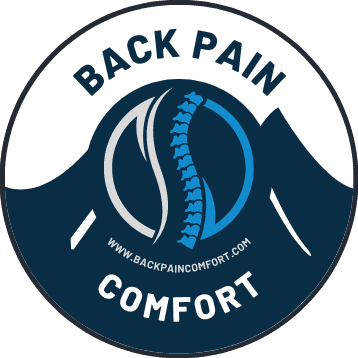
Back pain affects millions of people worldwide and is one of the leading reasons for doctor visits and missed work. It can be debilitating, impacting daily activities and overall quality of life. Whether it’s a nagging ache or a sharp, sudden onset, understanding the causes of back pain is the first step toward effective management and relief. This post delves into the intricate world of back pain, exploring its common causes and shedding light on the complexity of our backs.
Anatomy of the Back
The back is a complex structure of bones, joints, ligaments, and muscles. The spine, which runs from the base of the skull to the tailbone, plays a central role. It consists of 33 vertebrae, cushioned by intervertebral discs that act as shock absorbers. Ligaments hold the vertebrae in place, and tendons attach muscles to the spinal column. This entire assembly supports the body and enables flexible movement.
Central to the spine’s function are the nerves that run through the spinal canal, connecting the brain to the rest of the body. Any disruption in these components, whether from injury, wear and tear, or disease, can lead to discomfort or pain, signaling that something is amiss.
Common Causes of Back Pain
Back pain can arise from various sources, ranging from mechanical issues to more serious conditions. Here are some of the most prevalent causes:
- Mechanical Causes: The most common type of back pain stems from mechanical issues, such as:
- Disc problems: Issues like herniated or bulging discs occur when the discs that cushion the vertebrae become damaged and press on nerves.
- Muscle or ligament strain: Repeated heavy lifting or a sudden awkward movement can strain back muscles and spinal ligaments.
- Arthritis: Osteoarthritis can affect the lower back. In some cases, arthritis in the spine can lead to a narrowing of the space around the spinal cord, a condition called spinal stenosis.
- Injury-Related Causes: Accidents, falls, and sports injuries can cause acute back pain. These incidents can lead to severe issues such as fractures, sprains, and disc injuries that require immediate medical attention.
- Lifestyle Factors: Daily habits and lifestyle choices significantly impact spinal health. For instance:
- Sedentary lifestyle: Lack of regular physical activity can weaken the muscles around the spine, leading to poor support for the spinal column.
- Obesity: Carrying extra weight, especially around the midsection, can put additional stress on the back, contributing to pain over time.
- Poor posture: Regularly slumping or slouching can put extra pressure on the spine and lead to chronic pain.
- Age-Related Factors: As we age, the risk of developing back pain increases due to factors like:
- Degenerative disc disease: Typically associated with aging, this condition refers to the wear and tear on spinal discs, leading to chronic pain in some individuals.
- Osteoporosis: This condition weakens bones and can lead to painful fractures in the vertebrae.

Risk Factors
Several factors can increase the risk of developing back pain:
- Age: The risk of back pain increases as people age, starting around 30 or 40, due to decreased bone strength, muscle elasticity, and tone.
- Fitness level: People who are not physically fit are more prone to back pain, especially those who perform heavy lifting or awkward movements as part of their routine.
- Weight: Excessive body weight puts additional stress on the back, especially the lower back, contributing to or exacerbating pain.
- Occupation: Jobs that require heavy lifting, pushing, or pulling, particularly when it involves twisting or vibrating the spine, can lead to injury and back pain.
- Smoking: Smoking inhibits blood flow to the lower spine and causes the spinal discs to degenerate more quickly, which can lead to back pain.
Preventative Measures and Lifestyle Changes
To prevent back pain or alleviate its symptoms, consider adopting the following lifestyle changes:
- Exercise: Regular physical activity can strengthen the muscles that support your back and increase flexibility. Focus on core-strengthening exercises to improve stability and reduce the risk of injury. Yoga and Pilates are excellent for enhancing core strength and spinal alignment.
- Proper Posture: Maintaining good posture reduces stress on your back. When sitting, choose a seat with good lower back support, armrests, and a swivel base. Keep your knees and hips level and your feet flat on the floor or on a footrest.
- Lifting Techniques: Always lift objects from a squatting position, using your hips and knees rather than your back. Hold the object close to your chest, keep your spine straight, and avoid twisting while lifting.
- Healthy Weight: Being overweight strains back muscles. A healthy diet and regular exercise help maintain a proper weight and reduce the burden on your back.

When to See a Doctor
While most back pain gradually improves with home treatment and self-care, you should see a doctor if you experience the following:
- Severe pain that does not improve with rest
- Pain that spreads down one or both legs, especially if the pain extends below the knee
- Weakness, numbness, or tingling in one or both legs
- Unexplained weight loss
- Pain associated with a blow to your back or other injuries
Conclusion
Back pain is a common issue that affects people of all ages and can significantly impact quality of life. Understanding the various causes—from mechanical and injury-related to lifestyle and medical conditions—can help individuals take proactive steps to prevent and manage back pain. By recognizing the risk factors and implementing preventative measures like regular exercise, proper lifting techniques, and maintaining a healthy weight, you can reduce the likelihood of experiencing back pain.






